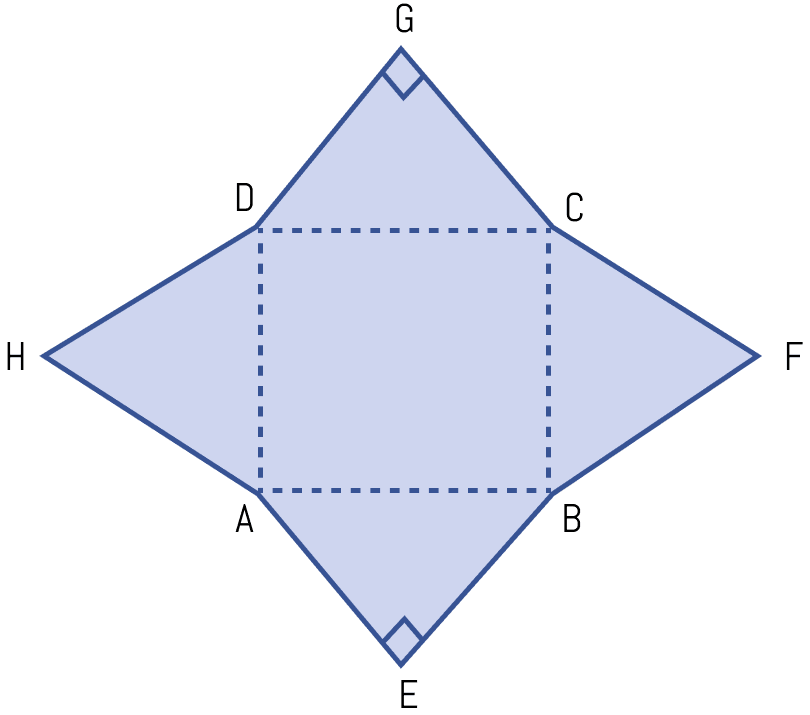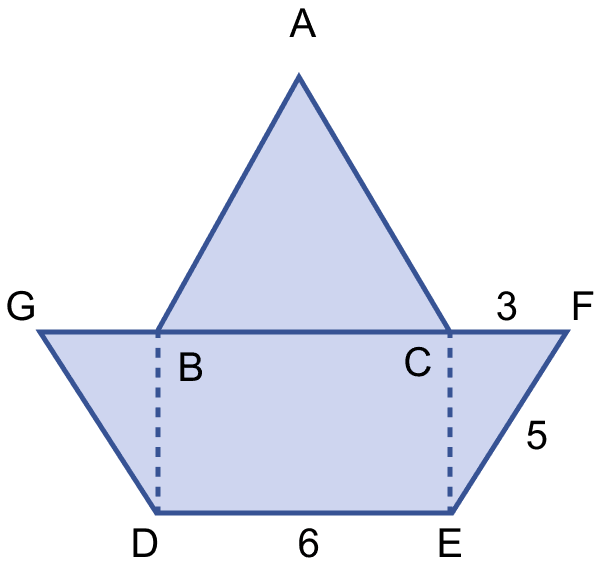Mathematics
Find the area enclosed by the figure (ii) given below. All measurements are in centimeters.

Mensuration
30 Likes
Answer
From figure,

BJ = 2 + 2 + 2 + 2 = 8 cm.
Area of rectangle ABJK = l × b
= AB × BJ = 2 × 8
= 16 cm2.
From figure,
JH = KH - KI = 6 - 2 = 4 cm.
Area of trapezium FGHI = (sum of parallel sides) × distance between them
= × (FI + GH) × JH
= × (2 + 2) × 4
= × 4 × 4 = 8 cm2.
Area of trapezium CDEF = (sum of parallel sides) × distance between them
= × (CF + DE) × BD
= × (2 + 2) × 4
= × 4 × 4 = 8 cm2.
Total area enclosed = Area of rectangle ABJK + Area of trapezium FGHI + Area of trapezium CDEF
= 16 + 8 + 8
= 32 cm2.
Hence, area enclosed by figure = 32 cm2.
Answered By
19 Likes
Related Questions
In the adjoining figure, ABCD is a rectangle with sides AB = 10 cm and BC = 8 cm. HAD and BFC are equilateral triangles; AEB and DCG are right angled isosceles triangles. Find the area of the shaded region and the perimeter of the figure.

Find the area enclosed by the figure (i) given below, where ABC is an equilateral triangle and DEFG is an isosceles trapezium. All measurements are in centimeters.

In the figure (iii) given below, from a 24 cm × 24 cm piece of cardboard, a block in the shape of letter M is cut off. Find the area of the cardboard left over, all measurements are in centimetres.

The figure (i) given below shows the cross-section of the concrete structure with the measurements as given. Calculate the area of cross-section.
